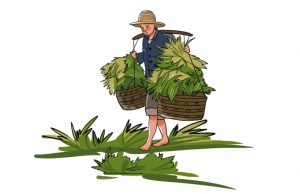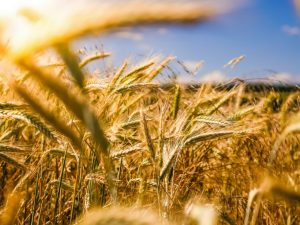Differences Between Bush Fallowing and Shifting Cultivation: Farming system refers to the various types of agricultural operations utilized by farmers all over the world to produce plants and animals. It is a system that includes the farmer, the farm, the types of crops planted, the livestock raised, and the technology utilized to carry out various agricultural operations in order to maximize productivity.
The following are examples of farming systems:
a. Shifting cultivation system.
b. Bush fallow system.
Recommended: Advantages and Disadvantages of Being an Entrepreneur
Meaning of Shifting Cultivation
Shifting cultivation is a farming practice in which a farmer cultivates a plot of land for a number of years until yields begin to decline. The farmer now abandons the land and relocates to another site, with no intention of returning to the old spot.
Here, Farmers first identify a suitable planting location near their communities or settlements.

Plants and vegetation that ordinarily cover the land must be removed before they can plant. Farmers cut down the majority of the tall trees with axes and machetes, which generally aid in the removal of lesser trees. The farmers then burn the rubble under under supervision.
When it rains, the rain washes the fresh ashes into the soil, replenishing the nutrients. Swidden is the term for the cleared area. Crops can only be grown on cleared ground for a maximum of three years. The soil nutrients are rapidly lost after those three years, and the area becomes too infertile to farm. People and farmers move on to a new place to start cleaning out a new swidden when it is no longer fertile. They leave the previous cropland for several years, allowing it to recover to its native vegetation state, which could take up to twenty years.

Also see: Highest Paying Jobs In The World 2022
Forms of Shifting Cultivation
Slash-and-burn shifting cultivation, the chitemene system, the Hmong system, the shifting cultivation cycle on the Orinoco floodplain, the slash-mulch system, and the plough-in-slash system are among the various types of shifting cultivation reported.
Characteristics Of Shifting Cultivation
a. They use the barter trade system, which is one of the hallmarks of shifting farming.
b. During the clearance of land, there is bush burning.
c. They have a pattern of transitory settlement.
d. They raise crops to feed themselves.
e. Cereals and annual crops such as maize and millet are grown.
f. Due to the tiny size of the plots, they rely on family labor.
g. By forsaking the land, it gains fertility.
h. They raise a couple of cash crops.
i. After a loss of fertility, people shift from one place to another.
j. They make do with rudimentary tools like hoes and pangas.
k. They are experts in the production of food crops.
l. They live in sparsely populated areas and rely on collective ownership for mobility.
m. They are reliant on nature and physical forces, with little improvement and attention paid to them.
Also see: Major Causes of Divorce in Nigeria: Top 10
Advantages
a. This procedure aids in the elimination of weeds, insects, and other microorganisms that affect the soil.
b. Farming in locations with dense vegetation, low soil nutrients, and unmanageable pests is possible with shifting cultivation.
Disadvantages
a. Forest trees are taken down in shifting agriculture.
b. The degradation of rain forests on a large scale contributes to global warming. When a huge number of trees are cut down, large amounts of carbon dioxide are released into the atmosphere.
Also see: Differences Between Negligence and Recklessness
Meaning of Bush fallowing
Bush fallowing is a type of shifting cultivation in which a farmer cultivates a plot of land for two or more years and then leaves it for a period of time to allow the land to grow into bush and recoup its nutrients before being used again. The farmer may not entirely leave that region in this system, but he may rotate his cultivation from one sector to another. Simply expressed, the bush fallow method is referred to as land rotation, and the period during which the land is permitted to rest in order to repair lost nutrients is referred to as the fallow season. The decomposition of deceased plants and animals replenishes the soil with lost nutrients.

Bush fallowing was once possible due to a low population and a sufficient amount of land. However, due to the increase in population and man’s activities on land, such as road construction, the construction of schools, hospitals, recreational centers, living houses, industries, churches, game reserves, stadia, and so on, there is hardly enough land to practice this system of farming. As a result, the land tenure system of agriculture is widely used.
Also see: Habits of Poor People that Rich people Don’t Do
Advantages of bush fallowing
a. Where there is enough area and a low population density, shifting farming systems are conceivable.
b. During the fallow period, soil fertility is easily recovered.
c. It does not necessitate a fertilizer capital investment.
d. It prevents pests, illnesses, and some weeds from accumulating and spreading on a specific piece of land or area.
e. Burning is a characteristic of the shifting cultivation system, and it aids in the destruction of many hazardous organisms in the soil.

Bush fallowing has the following disadvantages.
a. When soil is burned, many beneficial organisms are frequently eliminated.
b. Soil erosion is aided by the system.
c. Clearing new farmland takes a lot of time, effort, and money.
d. The farmer does not make any significant efforts to improve soil fertility under this method.
Also see: Differences Between An Entrepreneur and a Business Man
Differences Between Shifting Cultivation And Land Rotation or Bush Fallowing
1. Definition: Shifting cultivation is a farming practice in which a plot of land is continuously cultivated for a length of time before being abandoned due to a loss of soil fertility, the accumulation of pests and illnesses, and the subsequent reduction in crop yield.
In quest of a new farm and a new settlement, the farmer abandons not just his old land but also his hamlet, with no intention of returning. Land rotation, on the other hand, comprises farming crops on a plot of land until it is depleted, then leaving the land fallow for a few years before being used again.
The farmer clears extra areas in order to build new farms while remaining in his farmstead.
2. Land Settlements: Shifting cultivation settlements and land demarcations are transient, whereas rotating bush fallowing villages are delineated and settlements are permanent.
3. Time Frame: Because rotational bush fallowing takes such a short time, land under shifting cultivation returns to forest and woodland, whereas it does not in rotational bush fallowing.
4. Geographical Location: Shifting cultivation is used in less populated places such as Congo and Zambia, while rotational bush fallowing is used in areas with growing populations.
5. Modernization: They use some modern and scientific farming practices in rotational bush fallowing, but no modern or scientific farming methods are used to improve yield in shifting. eg they use tractors,compost manure etc
6. Land Fertility: In shifting cultivation, land regains fertility by abandoning it, whereas mixed farming is practiced in bush rotational fallowing and there there’s continuous loss of soil fertility.
7. Mixed Farming: Arable farming is specialized in shifting cultivation and mostly only one crop is grown, whereas livestock rearing often accompany rotational bush fallowing.
8. Commercialisation: Farmers who are pratice shifting cultivation are mostly subsistence farmers andvit is a traditional farming system, whereas those who practice rotational fallowing are mostly commercial farmers and it’s a modern system of farming whereby farmers make use of fertilizers and improved agricultural methods.
Rotational bush fallowing and shifting cultivation have certain similarities.
a. Cassava, beans, and potatoes are among the subsistence crops used under both systems.
b. Both of them utilize bush fire to clear land.
c. They grow cereals as well as annual crops that are harvested once a year.
d. They are both practiced in sparsely populated places.
e. They both are farming systems
f. Both rely on environmental conditions and utilize only a small quantity of fertilizer or irrigation.
g. They farm using conventional methods.
Conclusion
Because of population growth, land scarcity, and the need for agricultural modernisation, bush fallowing is an advanced kind of shifting cultivation that is replacing traditional shifting agriculture.

Edeh Samuel Chukwuemeka, ACMC, is a lawyer and a certified mediator/conciliator in Nigeria. He is also a developer with knowledge in various programming languages. Samuel is determined to leverage his skills in technology, SEO, and legal practice to revolutionize the legal profession worldwide by creating web and mobile applications that simplify legal research. Sam is also passionate about educating and providing valuable information to people.